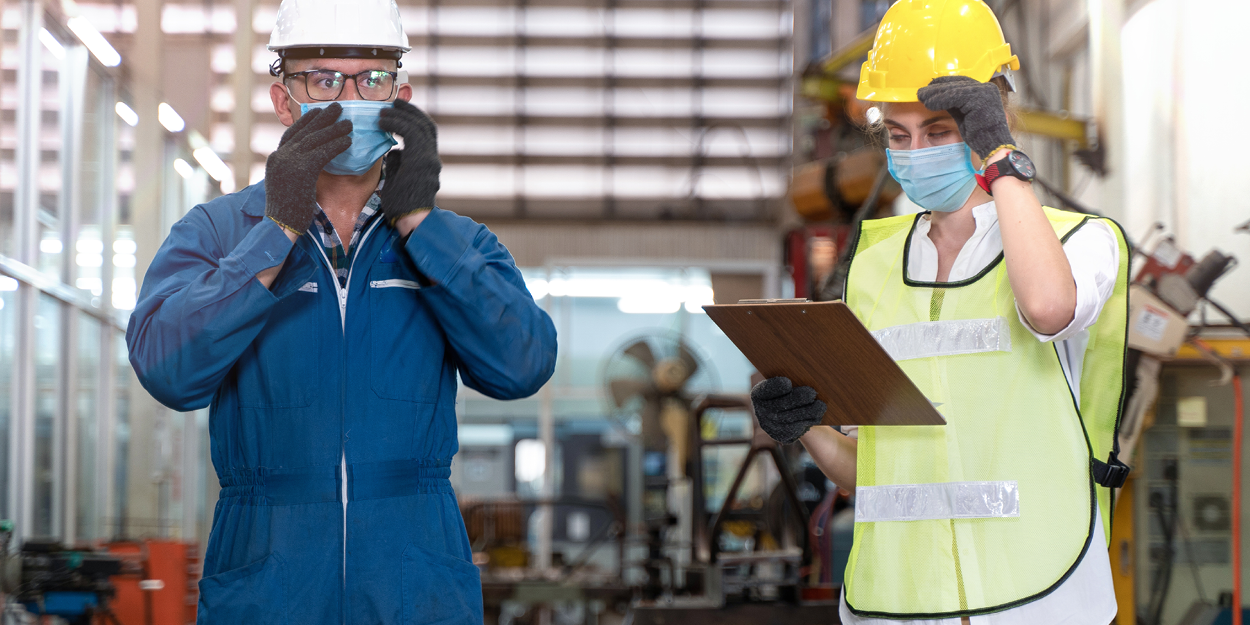From “quarantini” to “coronacation,” the COVID-19 pandemic has introduced all kinds of new words and phrases into our vocabulary. Chief among them might be “social distancing.”
Public health officials, including the U.S. Centers for Disease Control and Prevention, are urging all of us to maintain a social distance of at least six feet from those outside of our households to prevent the spread of the coronavirus.
That’s because infected people, who may display no symptoms, transmit the virus through droplets that go airborne as they talk, cough or sneeze. Standing at least six feet from others, experts say, will make it more difficult for the virus to travel among us.
Social distancing at the workplace
Maintaining social distance, however, can be difficult in the workplace, especially in construction, industrials and other businesses where employees must work side-by-side to lift heavy materials, operate machinery and take care of other tasks.
Still, local, state and federal officials across the country are recommending employers make the needed changes to ensure social distancing, and employers should be eager to implement them. Maintaining social distance on worksites reduces the risk of employees spreading the coronavirus amongst themselves. An outbreak could stop work and lead to serious health issues for some individuals.
To limit worker interaction on the job, the CDC makes several recommendations, including:
- Identifying choke points such as hallways, hoists and ingress/egress points where workers must stand together and making any needed modifications.
- Adopting staggered work schedules to limit the number of people on the worksite at any time.
- Coordinating site deliveries for minimal contact and encouraging delivery personnel to remain in their vehicles, if possible.
But, even with the best-laid plans, things can go awry, especially on sprawling worksites with dozens of workers. That’s where social distancing technology comes in.
What is social distancing technology?
Social distancing technology uses the latest advancements, including the Internet of Things (IoT) and cloud technology, to identify areas where workers are not maintaining a safe working distance from each other.
These wearable technologies help supervisors monitor locations on worksites where workers are congregating during breaks or where tasks require too many workers to be in one spot together. With the information, employers can remind workers of social distancing guidelines or redesign workspaces or shifts to limit who is in the same space at the same time.
While these platforms provide critical visibility into worksites, they also can alert workers in the moment when they’ve moved in too close to others, so they can make immediate changes to ensure they remain a safe distance apart.
These technologies help companies meet social distancing recommendations of the CDC, the U.S. Department of Labor’s Occupational Safety and Health Administration and other public health authorities to limit the spread of the coronavirus. And, as legal experts forecast a spike in legal claims over unsafe workplaces during the pandemic, they are a vital step toward keeping employees healthy while allowing for work to move forward.
How social distancing technology works
At Triax, we’ve created Proximity Trace™ to provide social distancing and contact tracing capabilities for employers. With this solution, onsite cellular gateways interact with TraceTags, which workers wear on their hardhats or clipped to a shirt. When workers move too close together, the TraceTags alert them with a flashing red LED light and audible alarm that they need to move apart.
The platform also collects data about worker interactions, including the amount of time they spend together. The data helps supervisors understand where they need to modify workspaces and tasks to limit interaction on worksites. With it, they also can trace who came into contact with an individual who was later diagnosed with COVID-19 to help prevent transmission among other workers, so projects can continue.
During these unprecedented times, as business begins to return to normal, social distancing solutions make it possible for companies to not just get back to work, but to demonstrate to their employees that they’re committed to maintaining a safe work environment while they’re there.
Contact us to learn more about how Proximity Trace can help make your worksite safer.
Download our eBook,’3 Keys to Becoming a Safety-Smart Organization‘, to learn more about securing the safety of your worksite.

